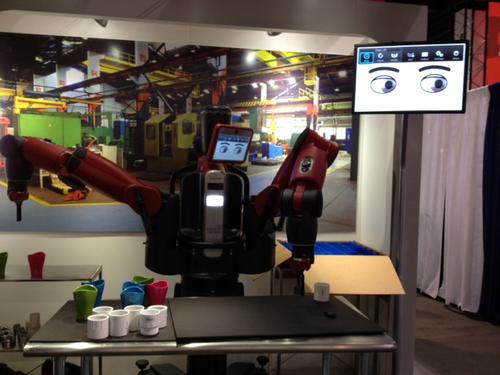February 26, 2013

Wandering the aisles and meeting vendors for interviews at the recent MD&M West and co-located shows in Anaheim, Calif., gave a mixed view of current manufacturing and assembly processes.
There are lots of ways you can build a product, from high-speed robotic assembly lines to small, refrigerator-sized 3D printing machines that make actual metal production parts for medical or aerospace uses. Two of these stood out from the rest.
In 3D printing, 30 percent of the business now consists of medical applications, and that proportion is growing, Andrew Snow, director of EOS North America, told us. EOS had on display plastic patient-specific devices, such as a cutting guide for knee surgery. Another, FHC's STarFix mobile fixture that fits on a patient's head, holds the probe used in a deep probe tumor biopsy, or in deep probe stimulation for Parkinson's patients. These fixtures reduce operating room time and increase patient comfort.

But the thing that impressed me the most was how costs are going down in titanium implants, one of the biggest medical applications. For example, a titanium hip implant, an acetabular cup made by Within Technologies with EOS systems, has an optimized lattice structure and surface pores that help speed integration with the patient's bone. Eighteen of these can be made in 20 hours, with an overall net cost of $70 each, which includes capital equipment depreciation, said Snow. That's an insanely low price.
Other titanium devices made by Within using EOS' direct laser sintering (DSL) machines include spinal and finger implants, as well as a bone rasp that surgeons use to clean and hollow out the femur before inserting an implant.
Snow said the additive manufacturing (AM) industry will continue to focus on rapid prototyping, but that there's a definite shift toward manufacturing production parts, especially medical and dental implants and devices. AM will also boost the growth of electronic spare parts warehousing, where designs are inventoried electronically instead of parts warehoused physically.
In robotics, my most memorable visit was to the Rethink Robotics' booth where I interviewed Eric Foellmer, marketing communications manager, and saw the company's Baxter robot demonstration. Unlike other industrial robots, Baxter isn't dangerous enough to be surrounded by a cage. I think the company has a good argument for what Foellmer said was a rethink (word play intended) from the ground up of how industrial robots can be made safe enough to interact with people so both can work together side by side. The company used some revolutionary technology -- at least in industrial robotics -- to make this possible.
Baxter was designed for small to midsized companies. A few fundamental principles governed its design. First, it had to be able to operate close to people outside a cage. "Baxter lets people work collaboratively with robots," said Foellmer. "We want it to be an addition to the line." (You can watch a video of Baxter doing the same things I saw here.)
About the Author(s)
You May Also Like



